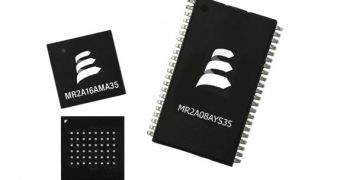Although MRAM has been around for a while, this type of memory has been unable to reach the high speeds associated with its volatile memory counterparts, but this is going to change in the future as scientists have uncovered a way to significantly speed up its data transfer rates.
Unlike DRAM and SRAM, Magnetic Random Access Memories (MRAM) is able to store data even after its power supply has been interrupted as it stores information through the magnetic arrangement of storage cells, enabling it to significantly decrease the boot times of PCs and mobile devices.
However, the technology still has problems when it comes to its access speed, so scientists at the Physikalisch-Technische Bundesanstalt research institute set out to develop a new chip connection that resolves these issues.
This is paired together with dynamic triggering of the component and enabled the scientists to improve MRAM's response times as well as its power consumption and thermal load.
According to a TechEye report, the response rate for MRAM has now reached just 500 picoseconds, compared to the two nanoseconds that were required before.
This translates into a data rate of up to 2GB/s, as opposed to the 400MB/s that were previously possible.
“Presently, only DRAM offers the possibility of fast data access. However the data has to be refreshed and is lost upon power down. Non-volatile storage is done using Flash memories,” said Dr Bernhard Smandek of PTB.
“However here write speeds are severely limited. Fast MRAM might thus be used to create storage cards with high data write rates to replace Flash or for computer cache memory that does not have to be refreshed.”
Right now the technology is till in the R&D stages, but a US patent has already been granted while an European patent is expected early this year.

 14 DAY TRIAL //
14 DAY TRIAL //